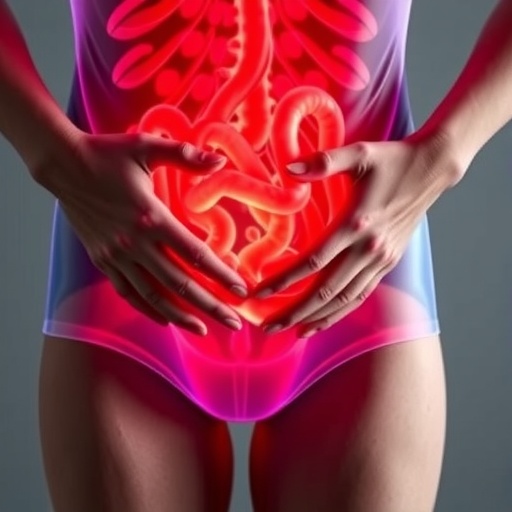Emerging evidence from a comprehensive national cohort study in Sweden reveals a compelling association between acute cystitis—a common urinary bladder infection—and an increased risk of developing urogenital cancers in middle-aged adults. Published in the open-access journal BMJ Public Health, this large-scale observational research provides novel insights into the role of cystitis as a potential clinical harbinger for malignancies affecting the urinary and reproductive systems.
The study analyzed health data from over three and a half million individuals spanning more than two decades, focusing on first-time diagnoses of acute cystitis recorded predominantly in primary care settings. Researchers utilized robust national population registries combined with primary healthcare datasets to capture detailed incidences of both infection and subsequent urogenital cancer diagnoses. This unique approach allowed for an unprecedented longitudinal assessment of the link between acute cystitis episodes and future cancer risk.
A striking finding of the investigation was that approximately 17% of the cohort experienced an initial diagnosis of acute cystitis, with women representing the majority of these cases. Interestingly, although women have a higher lifetime prevalence of urinary tract infections, men exhibited a notably greater risk of urogenital cancer following cystitis. This dichotomy challenges existing paradigms about infection-related cancer etiology and underscores gendered differences in disease progression and immune response.
Temporal analysis highlighted a critical window within the first three months after cystitis diagnosis during which the risk of urogenital cancers sharply surged. For prostate cancer in men, the standardized incidence ratio (SIR) was amplified sevenfold relative to individuals without a prior bladder infection. This translated into an excess incidence rate of approximately 551 additional cancers per 10,000 person-years—an alarming elevation warranting heightened clinical vigilance.
Bladder cancer risk was similarly magnified, demonstrating a 3.5-fold increase in men and over a threefold increase in women post-cystitis. These relative risks corresponded to excess cancer rates of about 40 cases per 10,000 person-years in men and nearly eight per 10,000 person-years in women, emphasizing the substantial burden of cystitis-associated malignancies. The data further extended to gynecological cancers, with infected women showing between four and eight times higher risk within the same acute period.
The protracted nature of elevated cancer risk was evident as well; although the intensity of risk declined over time, it remained significantly above baseline even five years post-infection, persisting into advanced age groups. This observation suggests that cystitis may not merely act as a temporal marker but could reflect underlying pathological alterations in the urogenital tract predisposing to tumorigenesis or indicating subclinical carcinogenic processes.
One hypothesis articulated by the researchers postulates that pre-existing urogenital neoplasms or pre-cancerous lesions may compromise mucosal integrity and local immune defenses, thereby increasing susceptibility to infections such as cystitis. Consequently, acute bladder infection could serve as an early clinical manifestation of occult malignancies rather than a causal factor per se. This bidirectional relationship emphasizes the complexity of infection-cancer interplay within the urogenital landscape.
Crucially, the study’s strength lies in its integration of primary care data, capturing acute cystitis diagnoses that are often managed outside hospital settings and thus underrepresented in prior research. The comprehensive national registry framework provided a near-complete epidemiological picture across gender and age strata, mitigating selection biases and enhancing generalizability. Nonetheless, limitations include the observational design, absence of microbiological confirmation of infection, and lack of data on confounding variables such as smoking, obesity, and diabetes.
Clinically, these findings advocate for heightened diagnostic scrutiny when encountering patients with acute cystitis, particularly middle-aged men presenting with first episodes. While further prospective studies are necessary to elucidate causality and underpin pathophysiological mechanisms, the observed temporal clustering of cancer diagnoses post-infection underscores the potential utility of cystitis as a sentinel event prompting advanced urological and oncological evaluations.
This research adds to a growing body of literature recognizing infections as biomarkers signaling elevated cancer risk, reinforcing the interwoven nature of infectious and neoplastic diseases. For practitioners, the data suggest that unexplained acute cystitis should raise suspicion for underlying urogenital malignancies and might justify urgent investigative procedures such as imaging, cystoscopy, or biomarker assays to detect early-stage cancers.
From a public health perspective, the study highlights a critical window for intervention where monitoring and early detection could substantially impact cancer prognosis and patient outcomes. Understanding the mechanisms by which urogenital cancers predispose to infection—or vice versa—may open avenues for novel therapeutic targets aimed at disrupting this pathological nexus.
In conclusion, this landmark Swedish cohort investigation illuminates acute cystitis as a potential clinical marker for subsequent urogenital cancers, particularly prostate and bladder malignancies in men and gynecological cancers in women, with risk peaking sharply within three months after infection. These revelations beckon both clinicians and researchers to reconsider the diagnostic and prognostic implications of common urinary infections within the broader context of cancer epidemiology.
Subject of Research: People
Article Title: Acute cystitis and subsequent risk of urogenital cancer: a national cohort study from Sweden
News Publication Date: 16-Sep-2025
Web References: https://doi.org/10.1136/bmjph-2024-002495
Keywords: Cancer, Urogenital Cancer, Acute Cystitis, Urinary Tract Infection, Prostate Cancer, Bladder Cancer, Gynecological Cancer, Infection Marker, Epidemiology
Tags: acute cystitis associationchronic infections and malignanciesgender differences in cancer riskhealth data analysislongitudinal health researchmiddle-aged adults healthobservational study findingsprimary care diagnosticsrecurring cystitis episodesSweden national cohort studyurinary bladder infectionurogenital cancer risk






